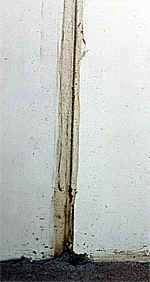 |
- Note substantial Caulking of panel joint. This joint has to be maintained over its
lifetime with re-caulking done often as panel joint deteriorates over time. Panel begins
to absorb moisture reducing it insulating efficiency. In freezers, the moisture will
freezer further expanding joint and may cause de-lamination and other problems.
|
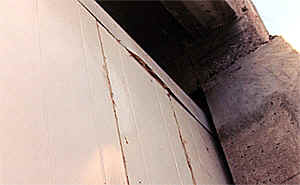 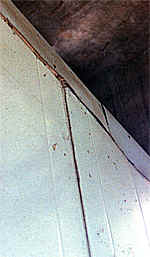 |
- Note where ceiling joint is beginning to come apart. Ceiling panels were secured to the
wall panels with capping on the exterior and angle on the interior. Gaps in the joint are
injected with foam or heavily caulked. Condensation of moisture can occur at these
locations o even icing on freezer applications.
|
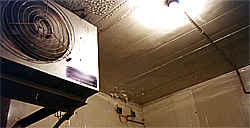 |
- This is a typical sight that many think is normal. Condensation and icing around the
coil area. This will occur if the coil is located near a door way where humid air will
enter every time the door is opened. In this case, the doors are opposite the coil
location. Close up details follow below.
|
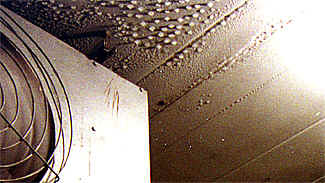
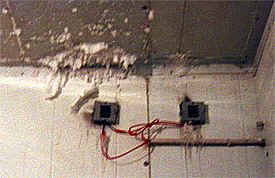 |
- The source of this humidity is through the joints in addition to through the doors.
- Note how moisture collects in a liquid state near the coil.
- But is frozen in the far corner next to the two pressure relief ports.
- This is evidence of very poor insulating performance of the panel and poor joint seal.
- You can see where moisture entered the ceiling to ceiling joints and ceiling
to wall joints and froze.
- The two pressure relief ports do not look operable which only makes the problem worse.
Any negative pressure inside the room as the temperature lowers (after a defrost cycle or
after door has been closed) will actually pull the moisture through the joint into the
room.
- Bally solves these problems with:
A superior insulating panel;
The tightest joints in the industry;
The most advanced pressure relief port (designed and manufactured by Bally).
|
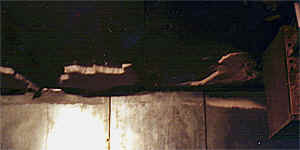 |
|